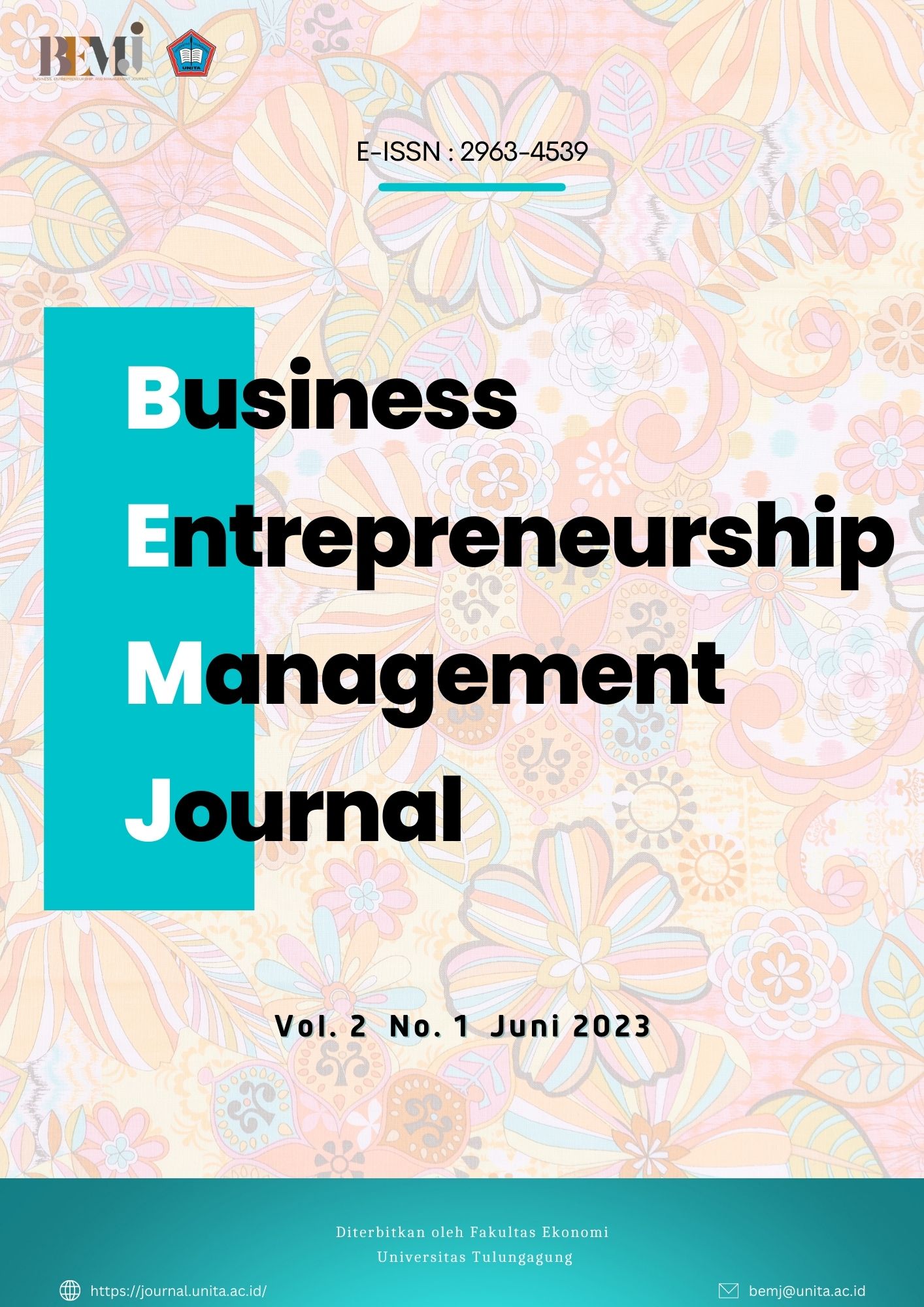ANALISIS PENGARUH GAYA KEPEMIMPINAN OTOKRATIS, DEMOKRATIK DAN LAISSEZ FAIRE TERHADAP PENINGKATAN KINERJA PERANGKAT DESA
DOI:
https://doi.org/10.36563/bemj.v2i1.731Keywords:
Autocratic, Democratic, Laissez Faire Leadership Styles, PerformanceAbstract
The success of village government leaders in influencing their village apparatus, one of
which can be determined by the leadership style used. The more the leadership style used
is favored by subordinates, the easier it is for leaders to influence and mobilize
subordinates. So that leaders can move their subordinates to achieve predetermined
organizational goals. The purpose of the study was to determine the effect of autocratic,
democratic and leissez faire leadership styles on improving the performance of village
officials in the Boyolangu District Area both simultaneously and partially. The results
showed that simultaneously (simultaneously) the autocratic, democratic, and laissez faire
leadership style variables had a positive and significant effect on improving the
performance of village officials in Boyolangu District, Tulungagung. This is evidenced
by the value of Fcount (361.619) greater than Ftable (2.38) or Fsig (0.000) < α (0.05).
Autocratic leadership style has a positive and significant effect on improving the
performance of village officials in Boyolangu District, Tulungagung. This is evidenced
by the value of tcount (3.818) greater than ttable (2.72) or tsig (0.000) less than α (0.05).
Democratic leadership style has a positive and significant effect on improving the
performance of village officials in Boyolangu District, Tulungagung. This is evidenced
by the tcount value (6.486) is greater than the ttable (2.72) or tsig (0.000) is smaller than
α (0.05). The laissez faire leadership style has a positive and significant effect on
improving the performance of village officials in Boyolangu District, Tulungagung. This
is evidenced by the value of tcount (3.332) greater than ttable (2.72) or tsig (0.001)
smaller than α (0.05). Democratic leadership style has the most dominant influence
compared to other independent variables. This is evidenced by the amount of Partial R
for the democratic leadership style variable has the greatest value compared to other
variables (autocratic leadership style = 0.389, democratic = 0.582, and laissez faire =
0.345).
Downloads
References
Fatmawati, Syarifah. 2013. Pengaruh Gaya Kepemimpinan Terhadap Kinerja Karyawan Pada Kebun Rimba Belian Inti Kabupaten Sanggau. Universitas tanjung pura, Pontianak.
Ghozali, I. 2006. Aplikasi Analisis Multivariate dengan Program SPSS. Cetakan keempat.Badan Penerbit Universitas Diponegoro, Semarang.
Priyatno, D. 2008. 5 Jam belajar olah data dengan SPSS 17. Andi Offset, Yogyakarta.
Rivai, V. 2005. Manajemen Sumber Daya Manusia. Raja Grafindo Persada, Jakarta.
Santoso, S. 2002. SPSS Versi 11.5 Cetakan Kedua: Gramedia, Jakarta. Sugandi,
Suprayogi. 2011. Administrasi Publik, edisi pertama, cetakan pertama. Graha Ilmu, Yogyakarta
Sugiyono. 2013. Metode Penelitian Manajemen, cetakan Pertama. Alfabeta, Bandung
Torang, Syamsir. 2013. Organisasi dan Manajemen, cetakan pertama. Alfabeta, Bandung
Tjiptono, Fandy. 2001. Total Quality Manajemen. Andi, Yogyakarta. Winardi, 2000. Kepemimpinan Dalam Manajemen, Cetakan Kedua, PT. Rineka Cipta, Jakarta.
Downloads
Published
Issue
Section
License
Authors who publish with this journal agree to the following terms:
- Copyright on any article is retained by the author(s).
- The author grants the journal, right of first publication with the work simultaneously licensed under a Creative Commons Attribution License that allows others to share the work with an acknowledgment of the work’s authorship and initial publication in this journal.
- Authors are able to enter into separate, additional contractual arrangements for the non-exclusive distribution of the journal’s published version of the work (e.g., post it to an institutional repository or publish it in a book), with an acknowledgment of its initial publication in this journal.
- Authors are permitted and encouraged to post their work online (e.g., in institutional repositories or on their website) prior to and during the submission process, as it can lead to productive exchanges, as well as earlier and greater citation of published work.
- The article and any associated published material is distributed under the Creative Commons Attribution-ShareAlike 4.0 International License
Deprecated: json_decode(): Passing null to parameter #1 ($json) of type string is deprecated in /home/journal.unita.ac.id/public_html/plugins/generic/citations/CitationsPlugin.php on line 68


_(1).png)



